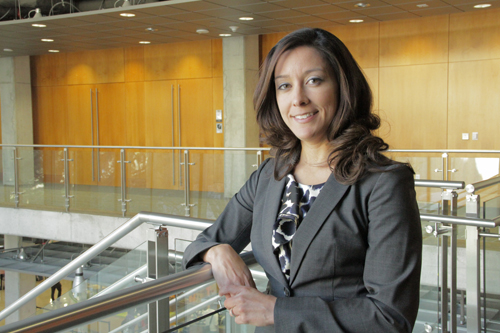Five Minutes With Audio & Video Home
fiveminuteswith
5 minutes with Ana K. Thiemer Project Manager - Renovation and Renewal Program, Facilities Services, University of Texas Austin
Ana K. Thiemer Project Manager - Renovation and Renewal Program, Facilities Services, University of Texas Austin discusses her department's successful efforts to secure more funding for renovations.

Ana K. Thiemer
Project Manager - Renovation and Renewal Program, Facilities Services
University of Texas Austin
What are some examples of the projects you prioritized?
At The University of Texas at Austin, the Replacement and Renewal program addresses maintenance projects that range from $5,000 up to $4 million. We hope to be proactive about the projects we select and utilize external assessments as well as internal input to identify our needs, and thus projects on campus. These projects consist of HVAC replacements, roof replacements, as well as code compliance projects addressing ADA modifications, fire codes, and other building code requirements. In addition to major replacements of systems in our buildings, we address requirements identified for roads, bulkheads, and landscaping. Our focus has also turned to projects addressing sustainable or those that yield a high return on investment for our campus.
Why were you called upon to prioritize these projects?
The University of Texas at Austin is not unlike most campuses or organizations. The need profoundly exceeds the means to address the critical systems on our campus. In order for facility management to support the university's mission, we knew we needed to have a reliable, deliberate, and defendable prioritization of projects on our campus.
How did you prioritize the projects --- what process was utilized?
To best serve The University of Texas at Austin and its mission, we realized our prioritization method would need to reflect fundamental needs of the university. A pair-wise comparison model based on risk allowed us to rank criterion against each other. This approach allows us to rank the criteria in order of importance, and to assign to the criteria some relative ranking indicating the degree of importance of each criterion with respect to the other criteria. For example, our main objective is to maintain the safety of students, faculty, and staff. If the risk was high in harming individuals, this should be the highest weighted criterion. This criterion should not be weighted as highly as public image. The University of Texas at Austin utilizes nine criterion to prioritize projects. These criterion are risk based and include:
1. Impact to Safety
2. Impact to Environment
3. Impact to Intellectual Property Damage
4. Impact to Property Damage
5. Impact to Area
6. Impact to Time
7. Impact to Public Image
8. Return on Investment
9. Probability of Failure
As you know the focus of our magazine is on maintenance and engineering, keeping that in mind, what has been the impact on your maintenance and engineering staff?
As before mentioned, internal staff's input is utilized to proactively maintain the data on the condition of the systems. This input is vital to the success of the program. The staff has valuable knowledge that cannot be obtained elsewhere. The staff's input is utilized, and they are valued. The information they provide generates the solution. This creates a positive atmosphere that extends to everyday maintenance operations. Further, savings in time and money are realized when the systems that need replacement are replaced at the appropriate time.
What is your next move in terms of addressing building maintenance needs?
The University of Texas at Austin's next move in terms of addressing building maintenance needs is to implement total cost of ownership. We hope to further refine the process to identify and prioritize projects by utilizing benchmarking figures to decrease our M&O budgets, replace systems 'just in time,' and reduce recapitalization and first costs. In addition, efforts to collaborate with the programmatic needs of academia will be a high priority as buildings with working, safe systems may not be adequately equipped to serve the needs of students today.
Find more on this topic:
Maintenance and Engineering, Sustainability Projects, University of Texas building projects
posted: 6/1/2012








